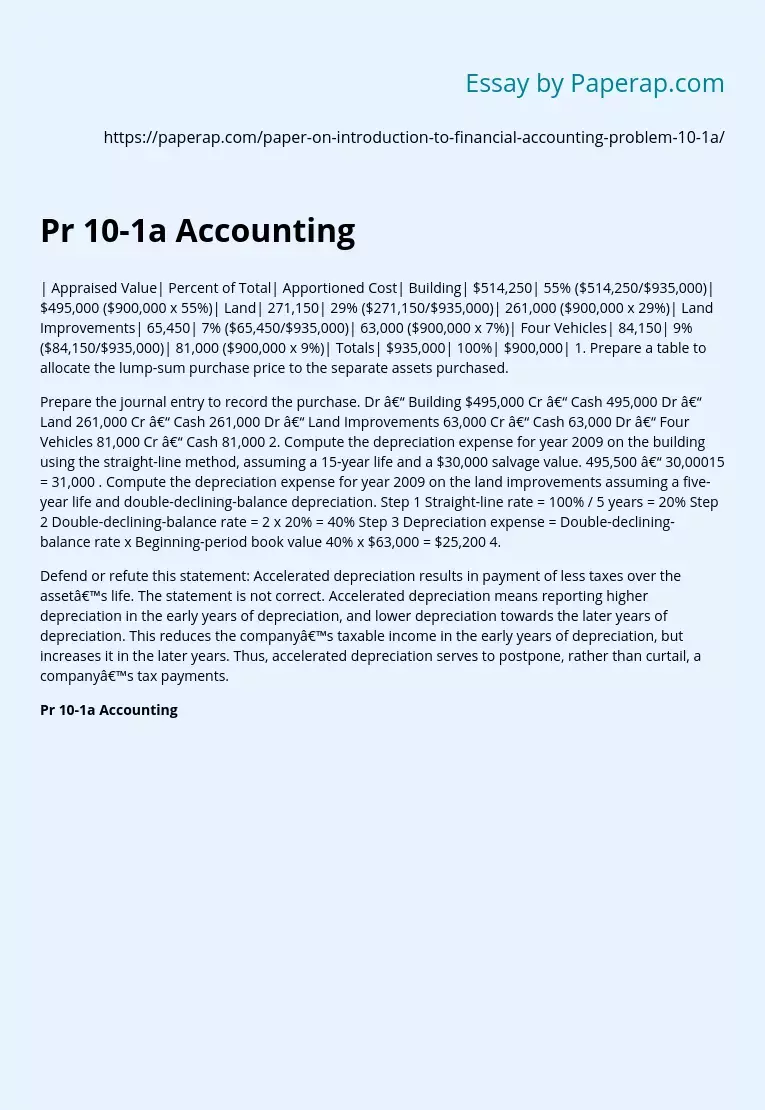Pr 10-1a Accounting
| Appraised Value| Percent of Total| Apportioned Cost| Building| $514,250| 55% ($514,250/$935,000)| $495,000 ($900,000 x 55%)| Land| 271,150| 29% ($271,150/$935,000)| 261,000 ($900,000 x 29%)| Land Improvements| 65,450| 7% ($65,450/$935,000)| 63,000 ($900,000 x 7%)| Four Vehicles| 84,150| 9% ($84,150/$935,000)| 81,000 ($900,000 x 9%)| Totals| $935,000| 100%| $900,000| 1. Prepare a table to allocate the lump-sum purchase price to the separate assets purchased.
Prepare the journal entry to record the purchase. Dr – Building $495,000 Cr – Cash 495,000 Dr – Land 261,000 Cr – Cash 261,000 Dr – Land Improvements 63,000 Cr – Cash 63,000 Dr – Four Vehicles 81,000 Cr – Cash 81,000 2. Compute the depreciation expense for year 2009 on the building using the straight-line method, assuming a 15-year life and a $30,000 salvage value. 495,500 – 30,00015 = 31,000 . Compute the depreciation expense for year 2009 on the land improvements assuming a five-year life and double-declining-balance depreciation.
Step 1 Straight-line rate = 100% / 5 years = 20% Step 2 Double-declining-balance rate = 2 x 20% = 40% Step 3 Depreciation expense = Double-declining-balance rate x Beginning-period book value 40% x $63,000 = $25,200 4.
Defend or refute this statement: Accelerated depreciation results in payment of less taxes over the asset’s life. The statement is not correct. Accelerated depreciation means reporting higher depreciation in the early years of depreciation, and lower depreciation towards the later years of depreciation. This reduces the company’s taxable income in the early years of depreciation, but increases it in the later years.
Thus, accelerated depreciation serves to postpone, rather than curtail, a company’s tax payments.
Pr 10-1a Accounting
Pr 10-1a Accounting. (2019, Dec 05). Retrieved from https://paperap.com/paper-on-introduction-to-financial-accounting-problem-10-1a/
